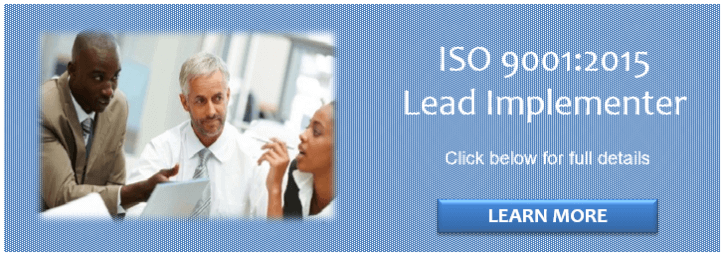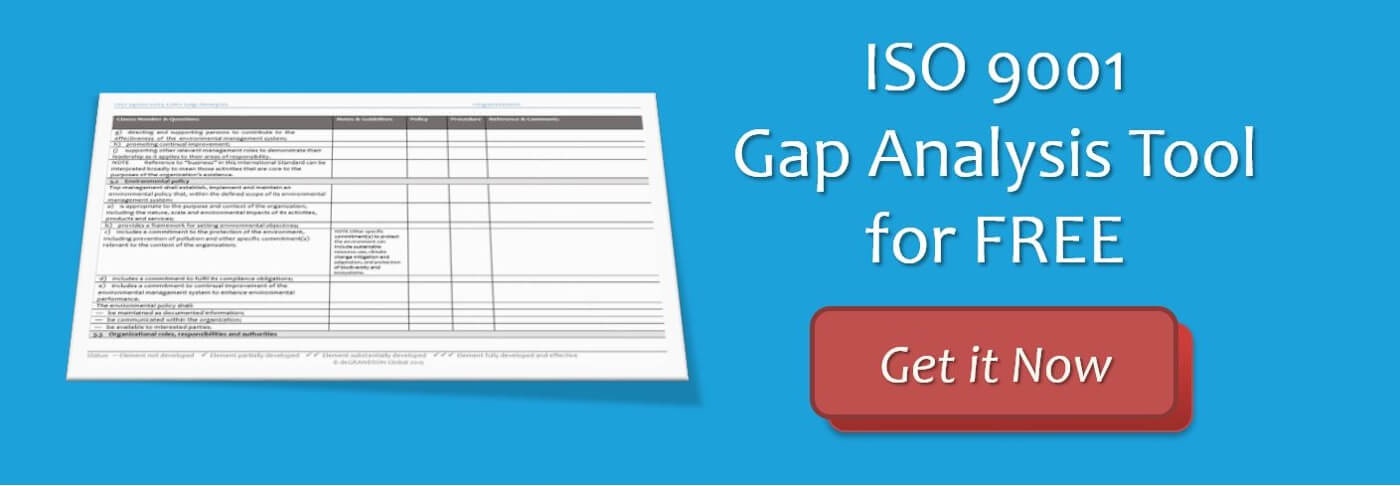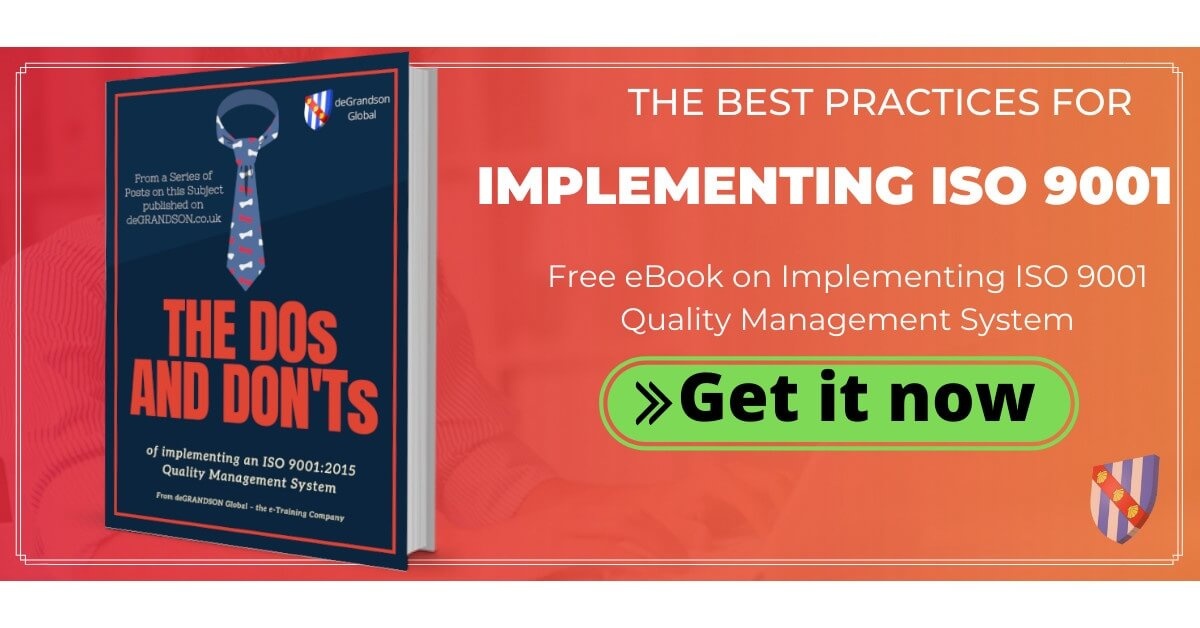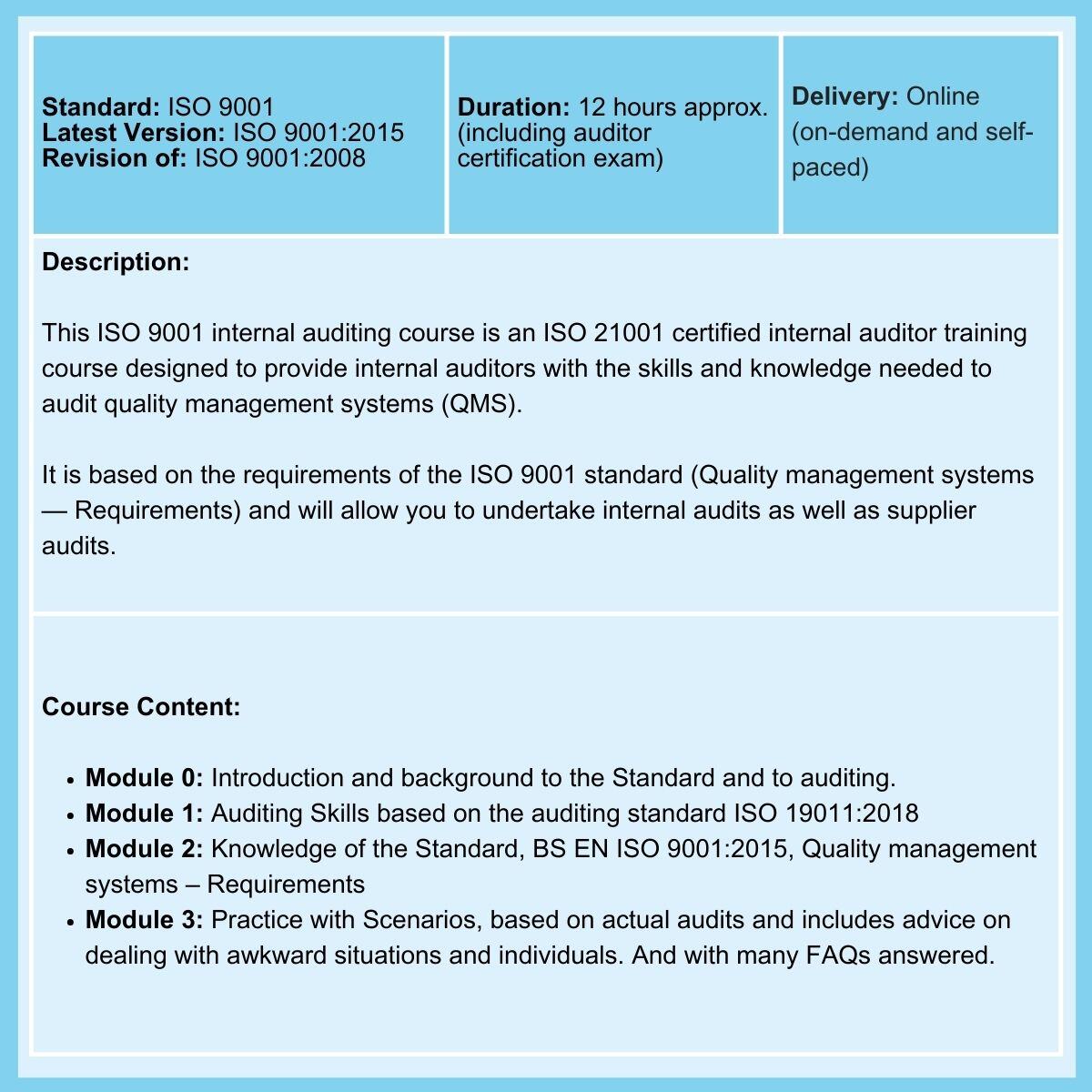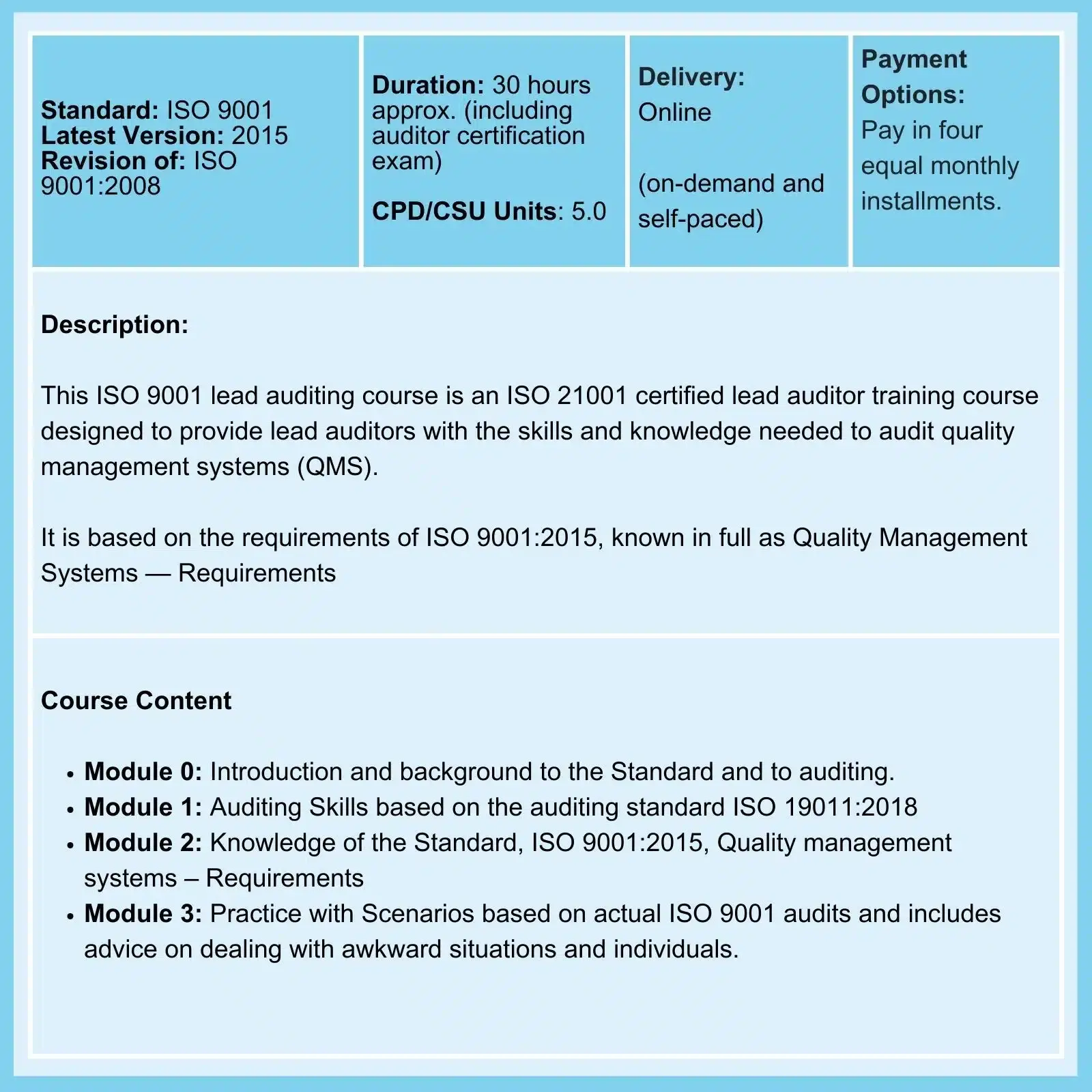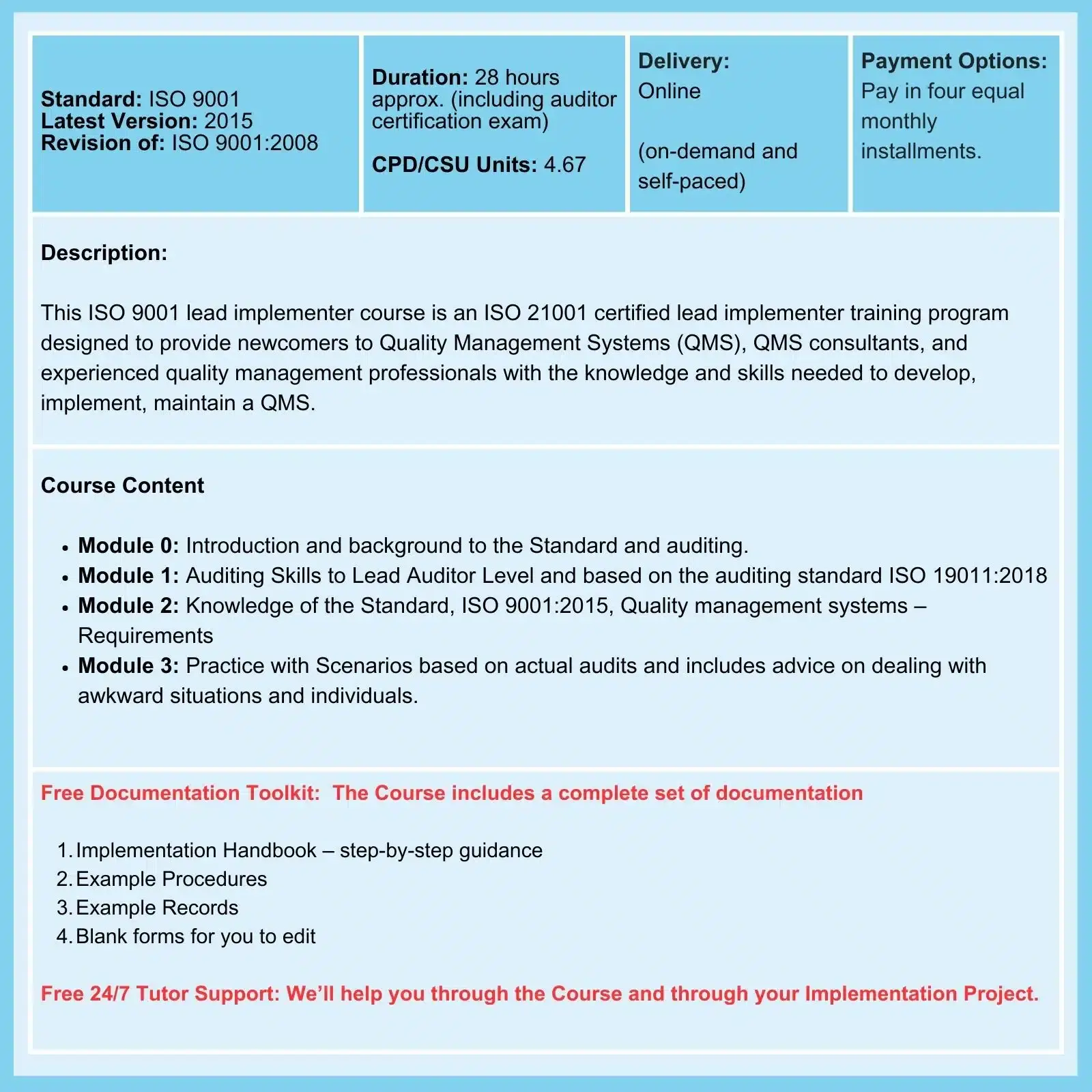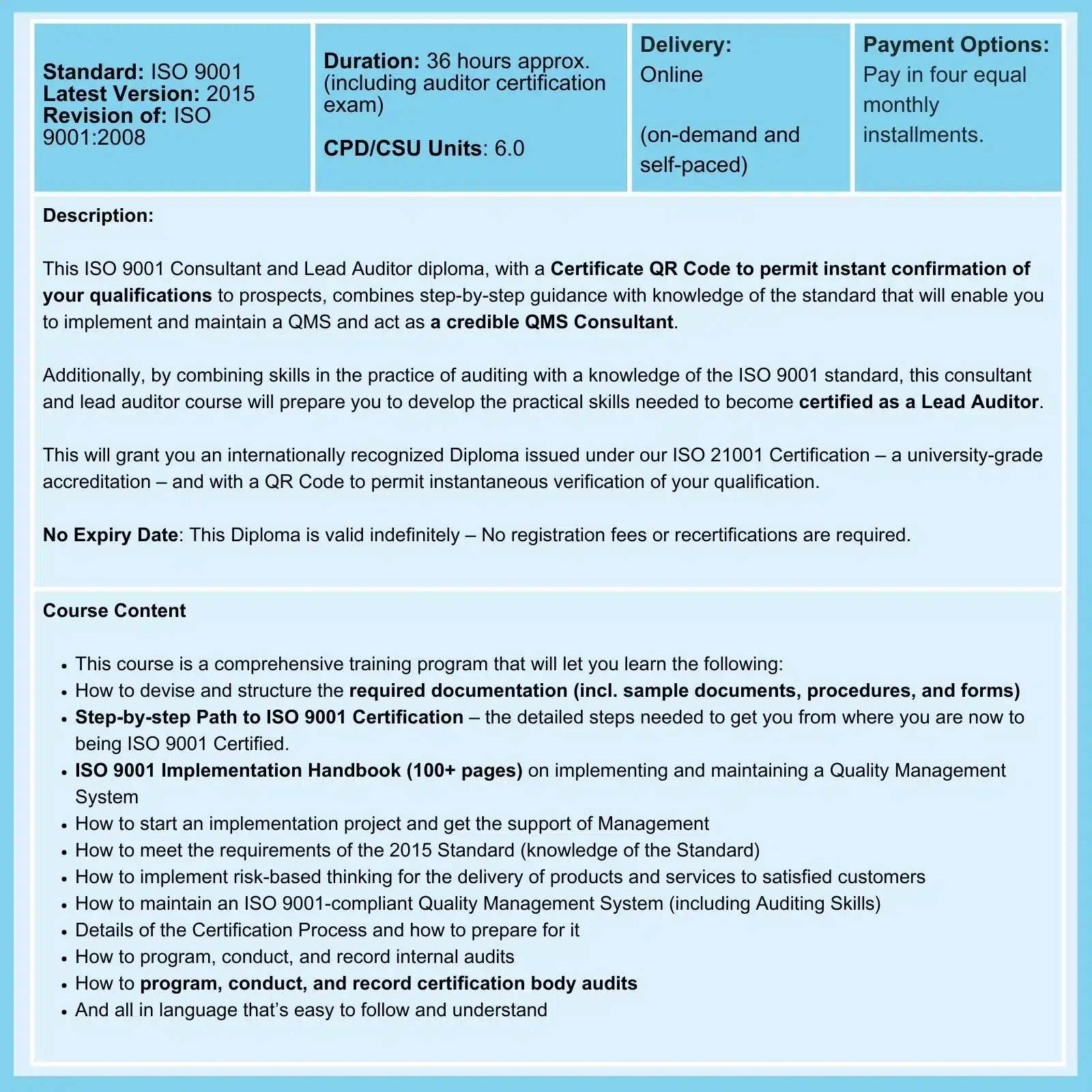
ISO 9001:2015 Clause 6.3 Planning for Changes - Practical Advice
The purpose of Planning the Changes is to maintain the integrity of the quality management system and the organization’s ability to continue to provide conforming products and services during the change.
And you will need records or other credible evidence to demonstrate compliance here.
NOTE: The advice given here also applies to ISO 14001, ISO 27001, ISO 45001, and other standards having the same HLS structure as ISO 9001.
ISO 9001:2015 Clause 6.3, Planning of Changes, states:
"When the organization determines the need for changes to the quality management system, the changes shall be carried out in a planned manner.
The organization shall consider:
- the purpose of the changes and their potential consequences;
- the integrity of the quality management system;
- the availability of resources;
- the allocation or reallocation of responsibilities and authorities."
- context of the organization (Clause 4.1),
- interested parties (Clause 4.2),
- planning of changes (Clause 6.3), or
- customer feedback (Clause 9.1.2).
For your ISO 9001 Certification Audit, you will need records of the Planning for Changes activities as objective evidence for the external auditors.
How to Plan for Changes in Accordance to ISO 9001
DOs
You will need to ensure that any proposed changes are planned, introduced, and implemented in a controlled manner.
Properly planning a change can help to avoid negative consequences such as the rework, cancellation, or postponement of a service; it can also result in positive consequences such as the reduction of nonconforming outputs or reduced incidents of human error.
Here are six entries for your Planning for Changes Checklist:
Do Consider the Many Sources of Change
The need to change your quality management system can be determined in many different ways.
For example, as part of management review, from internal or external audit results, reviews of nonconformities, complaints analysis, analysis of process performance, changes in context or from the changing needs of customers and other relevant interested parties.
The need for changes can result from transferring production lines from one site to another, changing process methods to improve trends in non-conforming outputs, and using new information and communication technology (ICT) for a service or process.
It may also result from outsourcing important processes, persons in key roles leaving (either due to retirement or medical issues), or moving to online order handling.
Do Prioritize the Changes
Address the changes that offer the prospect of the greatest improvement first. Selecting the one that colleagues are shouting about the loudest may not be the best choice.
Of course, while the customer is not always right, they are always the customer, and sometimes a commercial decision may change the priorities.
Do Evaluate the Impact of the Proposed Change
You should evaluate the impact of such changes on your quality management system and take the necessary actions to prevent undesired effects.
This can range from the application of project management methods to establishing performance and validation testing of new processes and systems on a pilot basis before they are implemented.
The level of planning and action required will vary depending on the potential consequence(s) of the change.
Do Plan the Change Carefully
Proper planning of a change can help to avoid negative consequences such as rework, cancellation or postponement of a service, or loss of a customer. It can also result in positive consequences such as the reduction of nonconforming outputs or reduced incidents of human error.
Do Use Project Planning Methods when appropriate
The level of planning and action required will vary depending on the potential consequence(s) of the change.
If offices are moved or new production planning software is introduced, the risks associated with failure are considerable. You will need to use project management techniques and have a project team, top management support, finance, and other resources for this type of project.
For simple projects (e.g., changing a procedure or form), the resources to hand will usually suffice.
Whatever the change, the impact of such changes on the quality management system should be evaluated by the organization, and the necessary actions to prevent undesired effects should be taken.
Do Establish a Procedure for Implementation
Whether you're dealing with ISO 9001 Implementation or ISO 9001 Transition, include a Procedure to ensure that appropriate methods are used and records generated for all QMS changes.
A Flowchart of the procedure, indicating where records need to be generated, should suffice.
DON'Ts
Don’t implement too many changes simultaneously
Don’t do more than you can manage/control. Don’t rush to finish things quickly – slow, steady progress is best.
If you can, do the changes one at a time, evaluating and confirming the effectiveness of the change before moving on to the next. When you review your progress (after, say, 12 months), you’ll be surprised by how much you have achieved and maintained with this approach.
Don’t go ‘All In’ if you can avoid it
The organization should consider actions that could reduce the potential for negative impacts of the change, such as first conducting a trial of the change before full implementation (e.g., a pilot project on one production line before roll-out on all production lines) or determining actions to be taken when the change is not successfully implemented.
Don’t forget the Risk-based Approach
The application of risk-based thinking can help determine the actions necessary in planning changes to the quality management system.
The organization should consider the availability of resources and the necessary allocation or reallocation of responsibilities for any change. This could be done by assigning persons to a team to manage the change or by delaying the change until the right resources are available.
Conclusion: You will need evidence to demonstrate that changes to processes are controlled.
For this purpose, many organizations use Engineering Change Requests or something similar to control changes to manufacturing processes. And, of course, changes to administrative and other processes must be handled in a similar manner.
Whatever approach you take to implementing ISO 9001:2015, you will need records and other hard evidence that the organization’s ability to continue to provide conforming products and services was maintained during the change.
deGRANDSON Global is an ISO Certified Educational Organization
In October 2024, we secured ongoing certification to three education-related ISO Standards. We now have a university-grade management system in place that conforms to the requirements of …
We have chosen ISO 21001 certification because, unlike IRCA and Exemplar badges (which in our opinion are commercially compromised), it is based on independent third-party assessment. It is a ‘university grade’ standard in use globally by schools, colleges, and universities to demonstrate their competence.
We offer courses for ISO 9001, ISO 13485, ISO 14001, ISO 17025, ISO 27001, ISO 45001, Data Protection, and Risk Management, among others.
